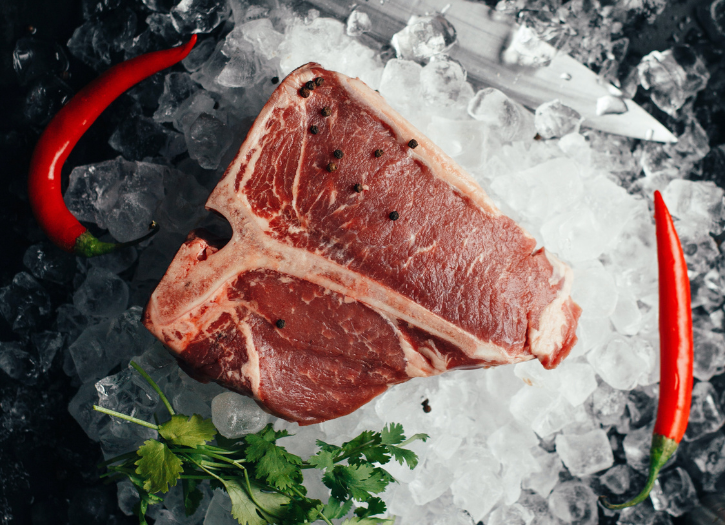Freezing food preserves it from the time it is prepared to the time it is eaten.
Since early times, farmers, fishermen, and trappers have preserved grains and produce in unheated buildings during the winter season. Freezing food slows decomposition by turning residual moisture into ice, inhibiting the growth of most bacterial species. In the food commodity industry, there are two processes: mechanical and cryogenic (or flash freezing). The freezing kinetics is important to preserve the food quality and texture. Quicker freezing generates smaller ice crystals and maintains cellular structure. Cryogenic freezing is the quickest freezing technology available due to the ultra-low liquid nitrogen temperature of −196 °C (−320 °F).
Preserving food in domestic kitchens during modern times is achieved using household freezers. Accepted advice to householders was to freeze food on the day of purchase. An initiative by a supermarket group in 2012 (backed by the UK’s Waste & Resources Action Programme) promotes the freezing of food “as soon as possible up to the product’s ‘use by’ date”. The Food Standards Agency was reported as supporting the change.
Natural food freezing (using winter frosts) has been in use by people in cold climates for centuries. In 1861 Thomas Sutcliffe Mort established at Darling Harbour in Sydney, Australia, the world’s first freezing works, which later became the New South Wales Fresh Food and Ice Company. Mort financed experiments by Eugene Dominic Nicolle, a French-born engineer who had arrived in Sydney in 1853 and registered his first ice-making patent in 1861. The first trial shipment of frozen meat to London was in 1868. Although their machinery was never used in the frozen meat trade, Mort and Nicolle developed commercially viable systems for domestic trade. The financial return on that investment was minimal for Mort.
By 1885 a small number of chickens and geese were being shipped from Russia to London in insulated cases using this technique. By March 1899, the “British Refrigeration and Allied Interests” reported that a food importing business, “Baerselman Bros”, was shipping some 200,000 frozen geese and chickens per week from three Russian depots to New Star Wharf, Lower Shadwell, London over three or four winter months. This trade in frozen food was enabled by the introduction of Linde cold air freezing plants in three Russian depots and the London warehouse. The Shadwell warehouse stored the frozen goods until they were shipped to markets in London, Birmingham, Liverpool, and Manchester. The techniques were later expanded to the meat-packing industry.
In 1929, Clarence Birdseye introduced “flash freezing” to the American public. Birdseye first became interested in food freezing during fur-trapping expeditions to Labrador in 1912 and 1916, where he saw the natives use natural freezing to preserve foods. The Icelandic Fisheries Commission was created in 1934 to initiate innovation in the industry and encourage fishermen to start quick-freezing their catch. Íshúsfélag Ísfirðinga, one of the first frozen fish companies, was formed in Ísafjörður, Iceland, by a merger in 1937.
Photo by Victoria Shes on Unsplash







Add Comment
You must be logged in to post a comment.